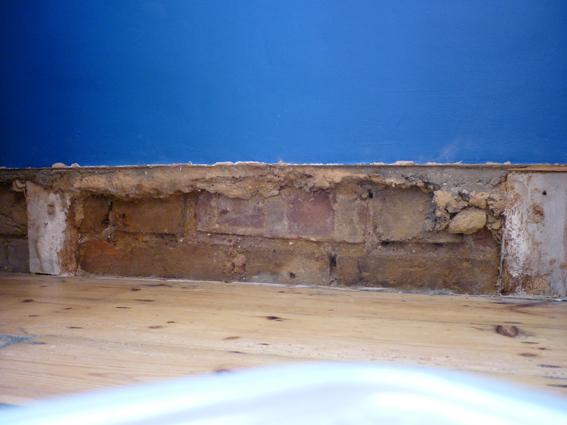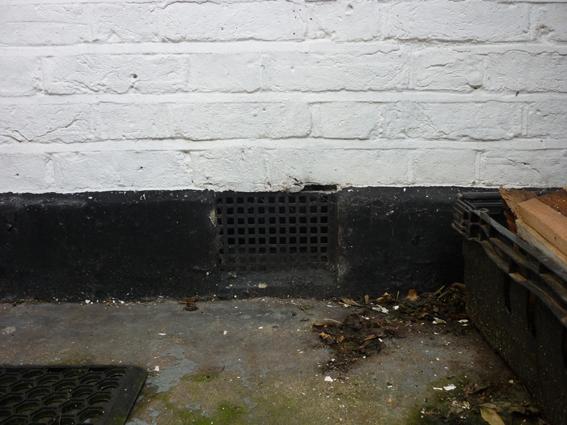hi there, first post, hope someone can advise..
I moved into my mid-terrace, c.1900 house in North London about six months ago. Standard construction for the age: solid walls with suspended (& exposed) timber floor, the sub-floor void ventilated front and back with an air brick at external ground level. Outside is a cementicious plinth about 15cm high coated in a bituminous product. I assume some form of DPC (?slate course) between that and the brick course above.
When I got round to painting the ground floor skirting board I noticed that part of it was pretty rotten under the old paint with accompanying damp smell. When I removed said skirting the cement render over the brickwork had completely deteriorated and the bricks and mortar behind were damp.
Only a c.60cm length of wall is affected. To either side it's more or less dry as far as I can see. Funny thing is that c.60cm happens to be located over the air brick. The air brick is not blocked, and I've not noticed any buildup of standing water after rain. There may be a bit of 'splashback' in heavy rain, as there is a projecting window sill above and there is hardstanding outside. Could this be causing it?
I find it strange that a damp problem has developed in exactly the place it shouldn't: where there is good ventilation. Could it be that somehow there is water ingress through the air-brick?
How can I cure this prob? If I dry out the damp area with a portable radiator or similar and then reinstall the skirting will the damp just come back eventually?
Thanks for reading this lengthy post! If anything's not clear please let me know. Any advice welcome!
I moved into my mid-terrace, c.1900 house in North London about six months ago. Standard construction for the age: solid walls with suspended (& exposed) timber floor, the sub-floor void ventilated front and back with an air brick at external ground level. Outside is a cementicious plinth about 15cm high coated in a bituminous product. I assume some form of DPC (?slate course) between that and the brick course above.
When I got round to painting the ground floor skirting board I noticed that part of it was pretty rotten under the old paint with accompanying damp smell. When I removed said skirting the cement render over the brickwork had completely deteriorated and the bricks and mortar behind were damp.
Only a c.60cm length of wall is affected. To either side it's more or less dry as far as I can see. Funny thing is that c.60cm happens to be located over the air brick. The air brick is not blocked, and I've not noticed any buildup of standing water after rain. There may be a bit of 'splashback' in heavy rain, as there is a projecting window sill above and there is hardstanding outside. Could this be causing it?
I find it strange that a damp problem has developed in exactly the place it shouldn't: where there is good ventilation. Could it be that somehow there is water ingress through the air-brick?
How can I cure this prob? If I dry out the damp area with a portable radiator or similar and then reinstall the skirting will the damp just come back eventually?
Thanks for reading this lengthy post! If anything's not clear please let me know. Any advice welcome!




